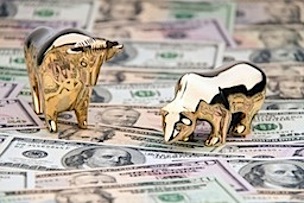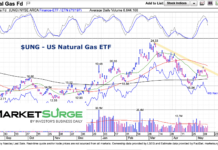 It’s been an amazing year for the markets in many respects. The resiliency of U.S. equities in the face of several bearish headwinds (and headlines) has been a feather in the bulls caps. But market breadth indicators and volatility in the bond market could be a test near-term. This follows disconnects in Crude Oil and the Euro that carried over from 2014.
It’s been an amazing year for the markets in many respects. The resiliency of U.S. equities in the face of several bearish headwinds (and headlines) has been a feather in the bulls caps. But market breadth indicators and volatility in the bond market could be a test near-term. This follows disconnects in Crude Oil and the Euro that carried over from 2014.
Earlier this year, I said that the market would be fairly well contained due to technicals, volatility, and investor uncertainty.
Although I’m a trader by day, I have been involved in the markets for 17 years. A penny for my thoughts, but here’s my macro take on what’s bullish and what’s bearish in the markets today. And sorting through this is confusing and explains why investors are in a state of confusion today.
Reasons To Be Bullish
1. U.S. Equities have held up very well. Stonger equities and U.S. Dollar a sign of capital flowing to U.S. assets in macro picture. Traditional headwinds like a stronger dollar and a ‘fits and starts’ economy have yet to stall stocks. Yet.
2. Sentiment is still bearish (typically a contrary indicator). As Ryan Detrick pointed out, recent AAII Investor polls have showed a very high amount of bearish sentiment.
3. If yields rise and there’s a loss of appetite for high yield bonds or government treasuries suffer, money may rotate to equities.
4. That said, rates are still low and corporate Credit and Blue Chip Buybacks are running strong.
5. M&A activity seems to be picking up.
6. Investors have yet to reach a “euphoria” stage.
7. Housing looked good in May. The first tick higher in rates may push a wave of prospective home buyers off the sidelines and give housing a brief lift. As Paban Raj Pandey pointed out, housing data from May was encouraging: New home sales were the highest in over 7 years and existing sales are near 5 year highs as well. And the price data is still strong (especially for existing homes lately).
8. Equities are still a preferred asset class along with real estate (Gold, Bonds, and select Commodities have shown weakness).
Reasons To Be Bearish
1. From a technical perspective, the S&P 500 has been contained by the 1.618 Fibonacci extension level (2138).
2. For Dow Theory followers, the Dow Transportation Index has been ill for some time. It took out 8600 support and is now attempting to break below recent support at 8300.
3. Market breadth has been weak for sometime. Investors can go broke shorting the market indices on market breadth and divergence indicators, but this one is a growing concern. 43% of stocks are above their 50-day moving average. The Advance-Decline Line for the NYSE and S&P 500 turned sideways and has moved lower. As well, the % Bullish Index is near early February lows (around 60).
4. P/E’s are historically high around 18.5. Most studies tend to show poor annualized returns out 3, 5, and 10 years. Other metrics like the Buffett Indicator, CAPE (cyclically adjusted price earnings), and Tobin Q are worrisome to investors as well.
5. Greece is back in the headlines. And investors are numb to it. I’m a little concerned by the carefree almost cocky attitude about the Greek crisis. European stocks have been correcting for some time. Although the Euro has been bouncing, it looks like it eventually wants to go to par or under par. That would mean a much stronger dollar.
6. Volatility across asset classes. First it was the decline in Crude Oil from 105 to 42/43 and the Euro from 1.40 to 1.05. Then it was the rise in government treasury yields and jittery bond market. If treasury yields are getting ready to rise later this year or next year, the transition period will likely continue to add volatility and that may spill over to stocks.
7. Currency Wars – Governments and Central Banks outside U.S. have been devaluing currencies through stimulus – See charts of the Yen and the Euro. Global stimulus is occurring post U.S. stimulus and near the bottom of a rate cycle which is likely adding to volatility.
8. Recent rise of 80+ basis points on the 10 Year Treasury Yield. All this with a stop and start domestic economy.
Thanks for reading.
Twitter: @andrewnyquist
The author does not have a position in any of the mentioned securities at the time of publication. Any opinions expressed herein are solely those of the author, and do not in any way represent the views or opinions of any other person or entity.







